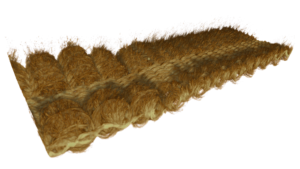Category
Funded by NWO
Seed money project
Start
2018
Status
Active
Acronym
CarpetAct
Islamic knotted-pile carpets are remarkable art objects and rich historical sources in museums around the world. The study of their complex characteristics can tell plenty about the date, the context and the societies in which they were produced. Art historians usually focus on the visual observation of their design and weaving structure, but this can be a rather subjective and laborious examination. Therefore, analytical methods that enhance this approach urge further exploration, so that more accurate art historical interpretations can be obtained.
In this project, an interdisciplinary combination of art history with analytical and data sciences will be developed, with the aim to improve the weaving examination of these complex carpets, i.e., the spin of threads; the ply and twist of yarns; the thread count and density; and the weaving structure of warps, wefts and piles. Hence, non-invasive analytical techniques, X-radiography and CT scanning, will be tested on a group of 16th- and 17th-century Islamic knotted-pile carpets or fragments of these objects, belonging to the Rijksmuseum collection. Machine-learning methods will be developed to process and compare digital photographs from these objects and a large quantity of data obtained with X-radiography and CT scanning.
Within this feasibility study, the main aim is to investigate the possibilities and limitations of the aforementioned techniques, and to investigate how data science can enhance the interpretation process of their results. When successful, this approach will be a valuable contribution to historical research and, in particular, improve and accelerate the technological research of historical textiles.
► Ana Serrano, Suzan Meijer, Rick R. van Rijn, Sophia Bethany Coban, Birgit Reissland, Erma Hermens, Kees Joost Batenburg, Maarten van Bommel, A non-invasive imaging approach for improved assessments on the construction and the condition of historical knotted-pile carpets, Journal of Cultural Heritage, 2020.

micro-CT scan of a small area of a knotted-pile woven structure, showing symmetric and assymetric knots.